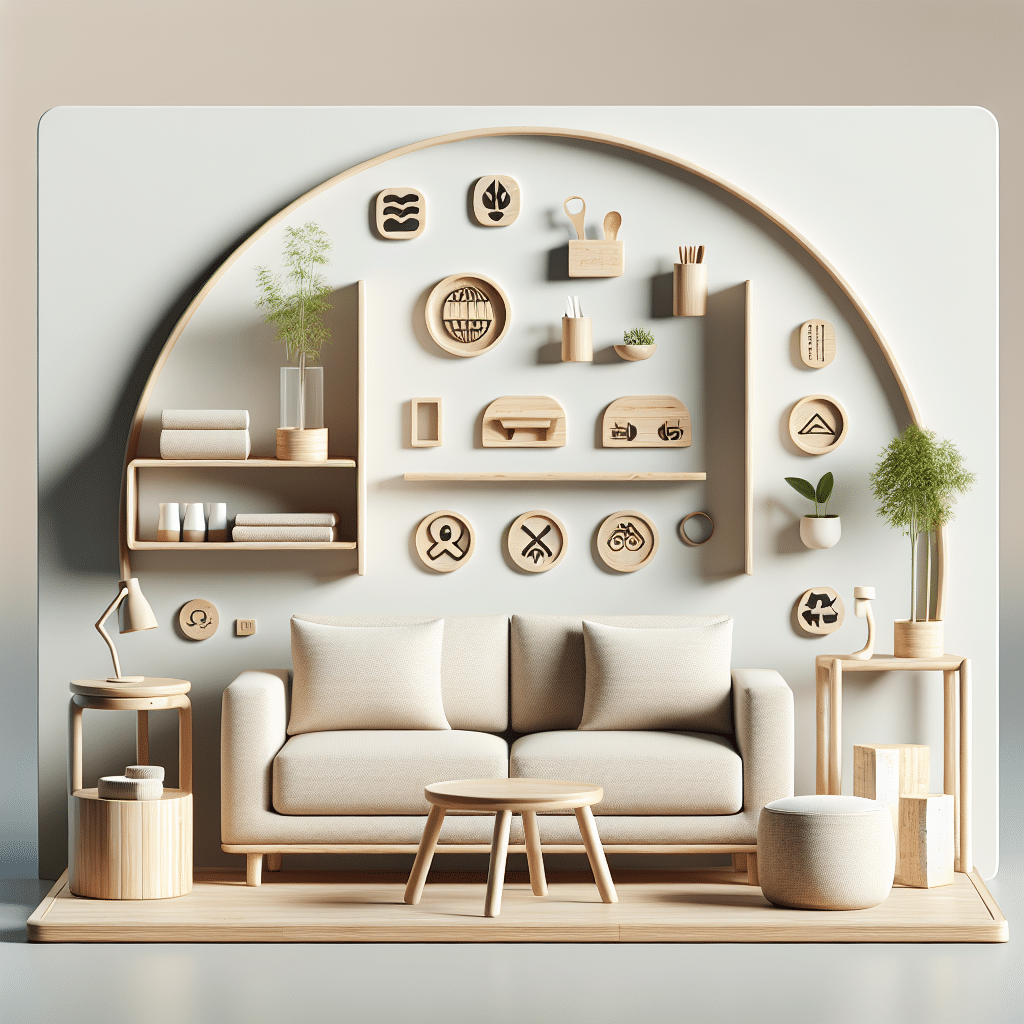Understanding Biodegradable Materials
Biodegradable materials are organic substances that decompose naturally through the action of microorganisms. This process converts these materials back into natural elements, which significantly reduces landfill waste and minimizes pollution. When crafting furniture, especially for small living spaces, choosing biodegradable options can provide both functionality and sustainability.
Types of Biodegradable Materials
-
Bamboo
Bamboo is one of the fastest-growing plants on Earth, making it a highly renewable resource. Its strength and flexibility make it ideal for crafting furniture. Bamboo furniture is lightweight, making it perfect for small spaces where mobility is essential. It offers a sleek aesthetic while being durable and resistant to moisture. -
Cork
Cork is harvested from the bark of cork oak trees, making it a renewable resource. This material is not only biodegradable but also an excellent insulator. Cork furniture can be stylish and functional, providing a unique texture and a lightweight structure for compact living spaces. -
Recycled Wood
Furniture made from reclaimed or recycled wood is not only environmentally friendly but adds character to any small space. By repurposing discarded wood, manufacturers reduce deforestation and use existing resources. Recycled wood can be crafted into chic, minimalist designs, perfect for maximizing limited areas. -
Hemp
As a fast-growing plant, hemp can be transformed into fiberboard, upholstery, and even sturdy structures for furniture. Hemp-based materials are lightweight yet strong, making them suitable for foldable chairs and tables that can be easily stored away in small apartments. -
Mycelium
The root structure of mushrooms, known as mycelium, can be cultivated into a robust material that acts similarly to traditional wood products. This innovative and biodegradable composite is gaining popularity due to its versatility and strength. Mycelium can be molded into various shapes, making it ideal for trendy furniture pieces in tight living quarters.
The Benefits of Biodegradable Furniture
-
Environmental Impact
Choosing biodegradable materials minimizes one’s carbon footprint and supports the sustainability movement. As these materials decompose, they enrich the soil instead of disrupting ecosystems as synthetic options do. -
Healthier Indoor Air Quality
Many biodegradable materials, such as bamboo and cork, do not emit volatile organic compounds (VOCs) often found in conventional furniture made from plastic and particleboard. This leads to healthier indoor air quality, essential for smaller living spaces where air circulation may be limited. -
Unique Aesthetics
Biodegradable materials often offer unique, organic aesthetics that can add character to any small living space. The natural variations in texture and color found in wood, bamboo, and cork provide an individual touch that mass-produced, synthetic furniture cannot replicate. -
Comfort
Natural materials tend to provide better comfort and ergonomics compared to synthetic alternatives. For instance, furniture made with organic cotton for cushioning not only feels soft but also minimizes allergy issues often exacerbated by synthetic textiles.
Design Considerations for Small Spaces
-
Multi-Functionality
When designing furniture for small spaces, consider pieces that serve multiple purposes. A bench made from recycled wood can act as both a seat and storage. Look for biocompatible materials to ensure sustainability while achieving multifunctional designs. -
Modular Furniture
Modular designs allow consumers to reconfigure and adapt their furniture arrangement based on their needs. Pieces made from biodegradable materials can often be lightweight, facilitating easy rearrangement and storage. -
Compactness
Focusing on sleek, streamlined designs aids in creating an open feel in small areas. Opt for furniture that has a low profile and minimalistic design while still using biodegradable materials to maintain an eco-friendly approach. -
Customization
Biodegradable materials are often easier to work with, allowing local artisans to craft customized furniture that fits unique small-space needs. Supporting local craftsmen not only bolsters the economy but ensures that furniture meets personal specifications while being environmentally friendly.
Care and Maintenance of Biodegradable Furniture
-
Regular Cleaning
Biodegradable materials may require different cleaning methods compared to synthetic options. Avoid harsh chemicals; instead, use natural cleaning solutions to maintain the integrity of the material. -
Protective Finishes
Applying natural oils or wax can offer protection against moisture while enhancing the finish of the furniture. This keeps the aesthetics appealing while ensuring the longevity of biodegradable pieces. -
Responsible Disposal
At the end of its life cycle, biodegradable furniture can be composted or returned to nature without harming the environment. Understanding the disposal method for each material ensures that it can decompose efficiently, thus contributing to a circular economy.
The Future of Biodegradable Furniture
As the demand for sustainable living increases, biodegradable materials are poised to play an essential role in the future of furniture design, especially for small spaces. Innovations in material science are leading to new composites that optimize the properties of natural materials while ensuring durability and aesthetics.
Final Thoughts on Biodegradable Furniture
Opting for biodegradable furniture not only provides practical solutions for small space living but also aligns consumers with a more sustainable and environmentally conscious lifestyle. By understanding the various materials available, their maintenance needs, and design possibilities, individuals can make informed choices that contribute positively to both their living spaces and the planet.
